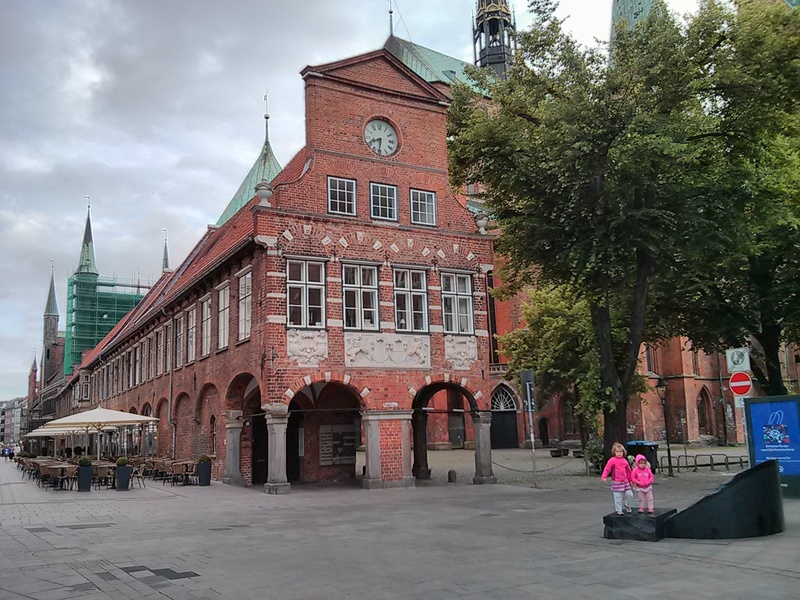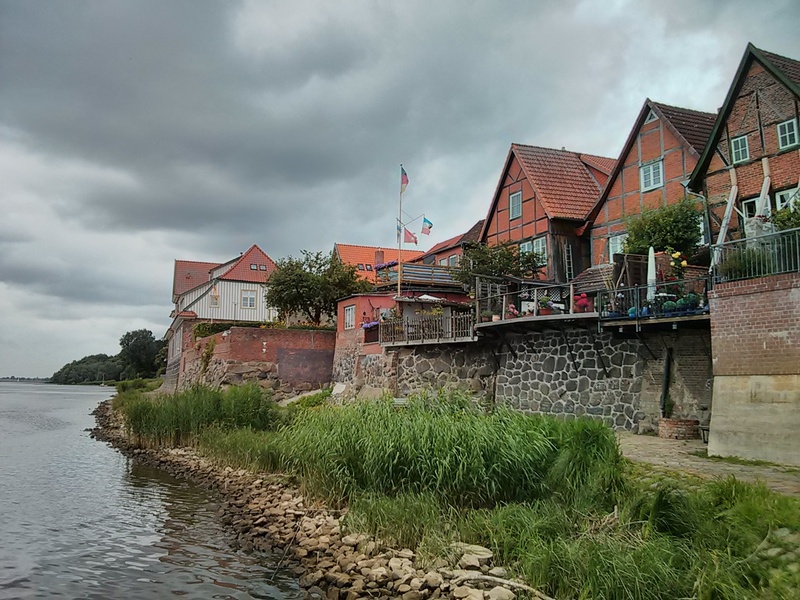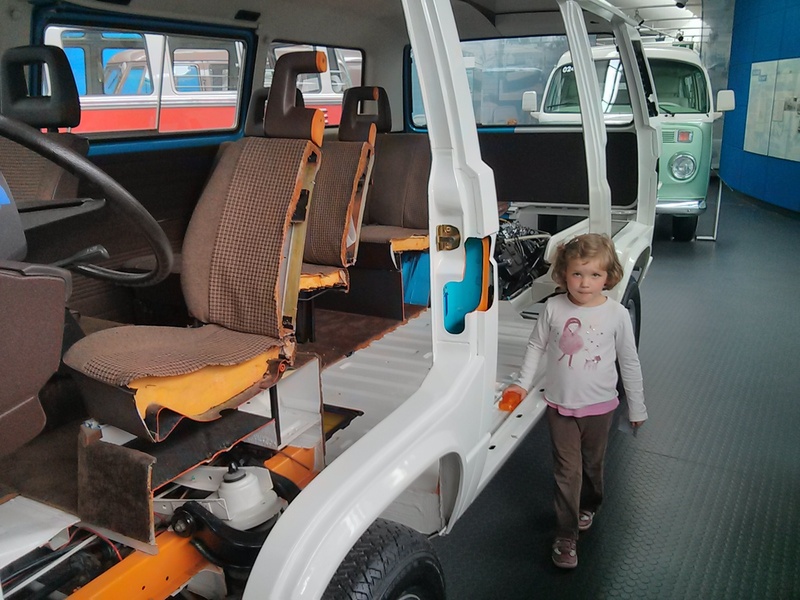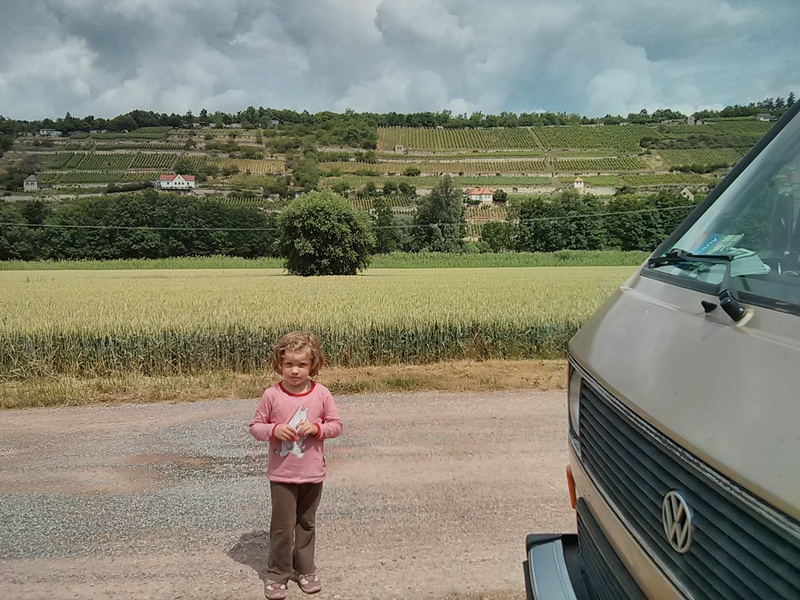
Arriving in Lubeck at about 18:00 we attempted to drive and park in the old town so we could take a nice evening walk, not too long for the kids. At first we struggled to find parking in the Altstadt. Then it turned out that there was a motor home stellplatz just across a bridge, just 100m from the Altstadt. We stayed overnight right in the centre! Only hiccup was that the public toilets in the city closed fairly early. Some some park bushes solved the immediate needs...

Lauenburg is where the Lubeck canal meets Elbe. Was likely an important town in the past with goods being handled by merchant houses on the riverfront. Walking the small old town and watching the barge shipping was interesting.

After Lauenburg we went to Lueneburger Heide. I put the GPS route to Wilseder Berg, and both Garmin and Google maps routed us all the way. However when we go there it turned out that the closest one could actually drive was Underloh, several kilometers away. We briefly thought to rent ebikes with child seats and try to ride the remaining kilometers. However Underloh turned out to also be a good starting point for walking and seeing the region. Underloh is certainly the most rural and away from it all place I have visited in Germany. We camped in the Stellplatz right next to the hiking trail heads. It was a very quiet night.
Wolfsburg and the VW museum is of course high on the wish list of many T3 owners. The wife was not equally excited. However it was raining all day so alternatives such as walking in the old town of Celle or Luneburg did not seem appealing. We took Landstrassen 3 and 188 to break the monotony of Autobahn driving. This turned out to be a mistake as there were many heavy trucks driving there and we got stuck behind without many chances to pass.
The VW museum was good, but perhaps not as spectacular as I had hoped. There was just one Westfalia camper (T2). Among the more interesting vehicles were an original Schwimmwagen, a T2 4WD prototype, and some newer experimental low fuel consumption cars. They also had a T3 cutout model of exactly the '82 Diesel I have in Canada (sans Westy camper equipment). Gave some interesting new perspective to "see through" the T3.

Halle was the best example of socialist city planning and architecture we saw on the trip. Both the city centre and some planned suburbs were in good condition, despite rumours to the opposite. (There were also areas in need of repair, but not nearly as many as I had expected.) The city centre has an architecture reminiscent of Sergels torg in Stockholm, an area where the socialists also bulldozed the old city and built spacious concrete plazas (or concrete deserts some may say). Suburban DDR Plattenbaus don't seem that different from public housing in other parts of northern Europe.
The Saale - Unstrut river region is touted as a German Bordeaux. Freyburg and Naunburg are listed as particularly nice in the Lonley planet guide. My wife wanted to visit. On the way the Stellplatz guide showed a location on the Geiseltalsee. It was getting late and a lakeshore spot would be nice. However when we got there it turned out that the Stellplatz was a way from the lake and the lakefront was graced with a large garbage recycling facility. The Stellplatz was at a Pension and in nice shape. Just outside were DDR relics to inspect. On the man street of the village, Krumpa, the largest building was the DDR cultural centre - undoubtely a place of importance some decades ago, but now overgrown. In the other direction was an incredibly massive concrete cylinder, probably 40m long and 5 in diametre. I could not figure out its former function. My suggestion would be to put a plaque on it and call it industrial cultural heritage.
The next day we continued towards Freyburg. There was road construction and a rather long detour. At one point we got lost. Looking at the map afterwards we were probably in Ebersroda. It looked like a nicely example of a traditional village, where the house fronts faced an oval central area, and the house backs the fields. Each house had a generous back yards for vegetable growing etc, and the village fields were outside.
In Freyburg there was a traveling market, pretty similar to others we've seen. Cheap clothes, shoes and knickknacks. The town was nice but not exceptional.
On way out of Freyburg, on the south side, we finally saw what we came for: vineyards. The steep slope of the Unstrut river was planted with grape fields, interleaved with the vintner's houses. There was a trail with interpretive signs. It explained that the steeper slopes had to be worked mostly manually, and working just 1 hectare (2 acre) took 1600h annually. The region has 760hectares of vineyards.

To be continued...
Upcoming in part 4: Buchenwald, Weimar, Nabburg, Schwandorf, Regensburg, Weltenburg
Martin + family and '85 VW T3 Westfalia